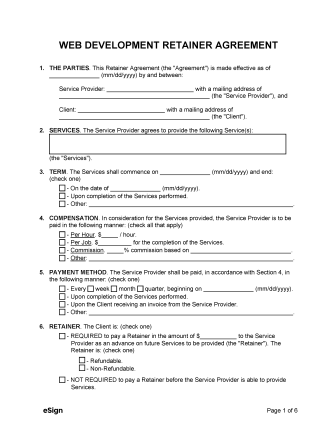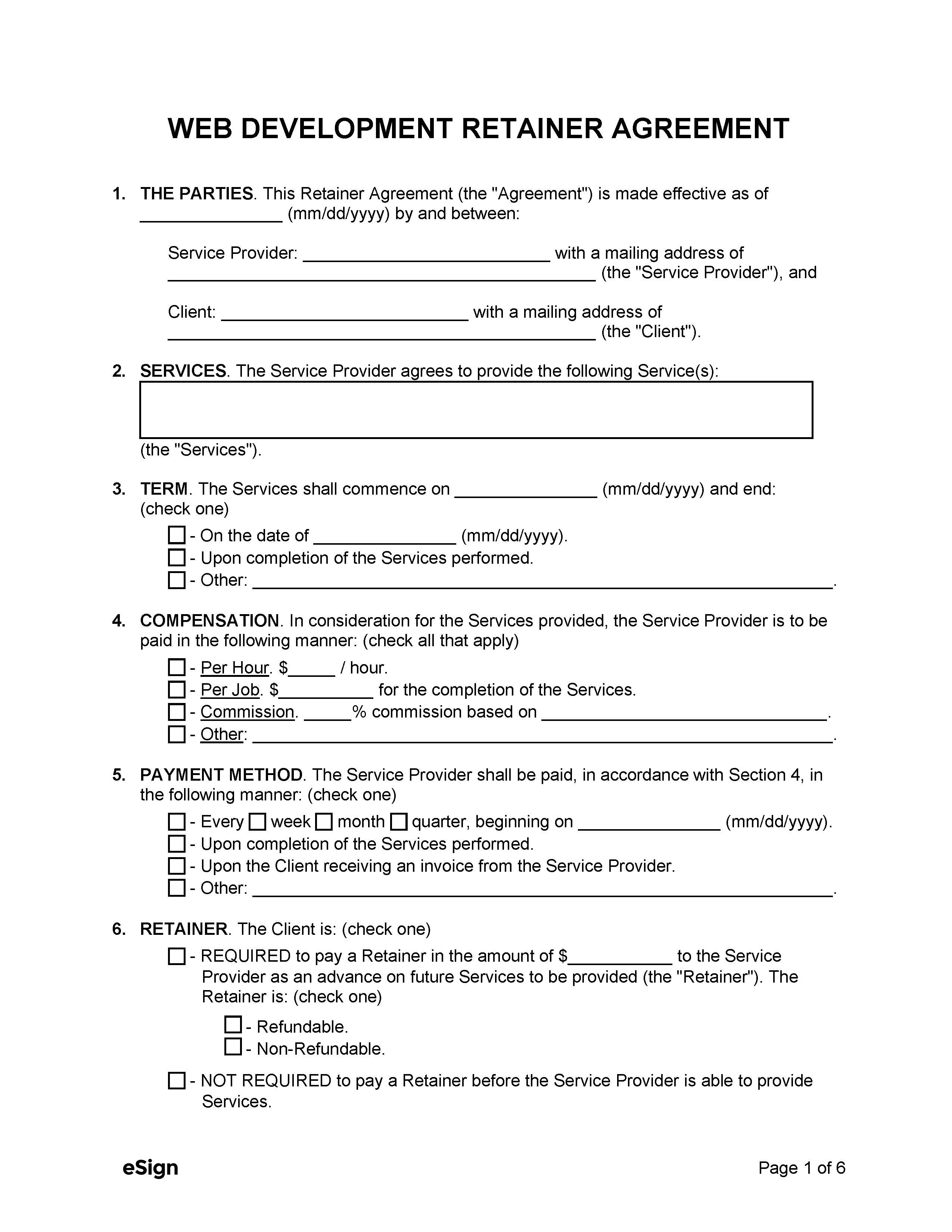Essential Agreement Terms
The following terms are crucial for every web development retainer agreement:
- Contract Term – Specifies the duration of the retainer agreement.
- Retainer Fee – The upfront payment required from clients to secure access to the developer’s services.
- Compensation – Details the developer’s rate for their services.
- Services – Outlines the specific tasks the developer will perform for the client.
- Expenses – Clarifies which party is responsible for covering service-related costs.
- Non-Disclosure – A clause ensuring the developer protects the confidentiality of the client’s information.
- Independent Contractor Status – Confirms that the developer is a freelancer (independent contractor) and not an employee of the client.
How to Price a Web Development Retainer
1. Determine Expectations – Web developers should start by outlining the tasks they’ll need to perform. Some services that clients typically request include:
- Resolving hosting outages
- Analytic tracking and reporting
- General website maintenance and improvements
- On-call emergency response
- Testing website application functionality
2. Set an Hourly Rate – Hourly rates vary depending on the developer’s skill level, experience, expected overhead costs, and competitor pricing.
3. Calculate Fee – Once the developer defines the project’s scope and establishes an hourly rate, they can calculate the retainer fee by multiplying the rate by the estimated hours. Developers may want to offer a discounted retainer fee to incentivize clients to pay upfront.
Sample
Download: PDF, Word (.docx), OpenDocument
WEB DEVELOPMENT RETAINER AGREEMENT
This Retainer Agreement (“Agreement”) is by and between [DEVELOPER’S NAME], hereafter referred to as the “Developer,” and [CLIENT’S NAME], hereafter referred to as the “Client.”
1. SERVICES. The Developer agrees to provide the following services to the Client: [DESCRIBE DEVELOPER’S SERVICES] (“Services”).
2. COMPENSATION. In consideration for the Services to be provided, the Client agrees to pay the Developer $[AMOUNT] per hour.
3. RETAINER. As an advance on future Services to be provided, the Client is required to pay the Developer a retainer in the amount of $[AMOUNT] every ☐ week ☐ month ☐ quarter, beginning on [DATE] (“Retainer”). The Retainer is: (check one)
☐ – Refundable.
☐ – Non-refundable.
4. NON-DISCLOSURE. The Developer agrees not to disclose or misuse the Client’s proprietary or confidential information without prior written consent, except as needed to perform the Services, recognizing that such actions would cause irreparable harm to the Client.
5. EXPENSES. The Client shall only be responsible for the following expenses: [LIST EXPENSES TO BE PAID BY CLIENT].
6. INDEPENDENT CONTRACTOR STATUS. The Developer is an independent contractor, and neither the Developer nor their employees or contract personnel are or shall be deemed the Client’s employees.
7. TERMINATION. Either party may terminate this Contract upon [#] days’ written notice.
IN WITNESS WHEREOF, the parties have executed this Agreement on [MM/DD/YYYY].
Developer’s Signature: ____________________
[CLIENT PRINTED NAME]
Client’s Signature: ____________________
[CATERER PRINTED NAME]

